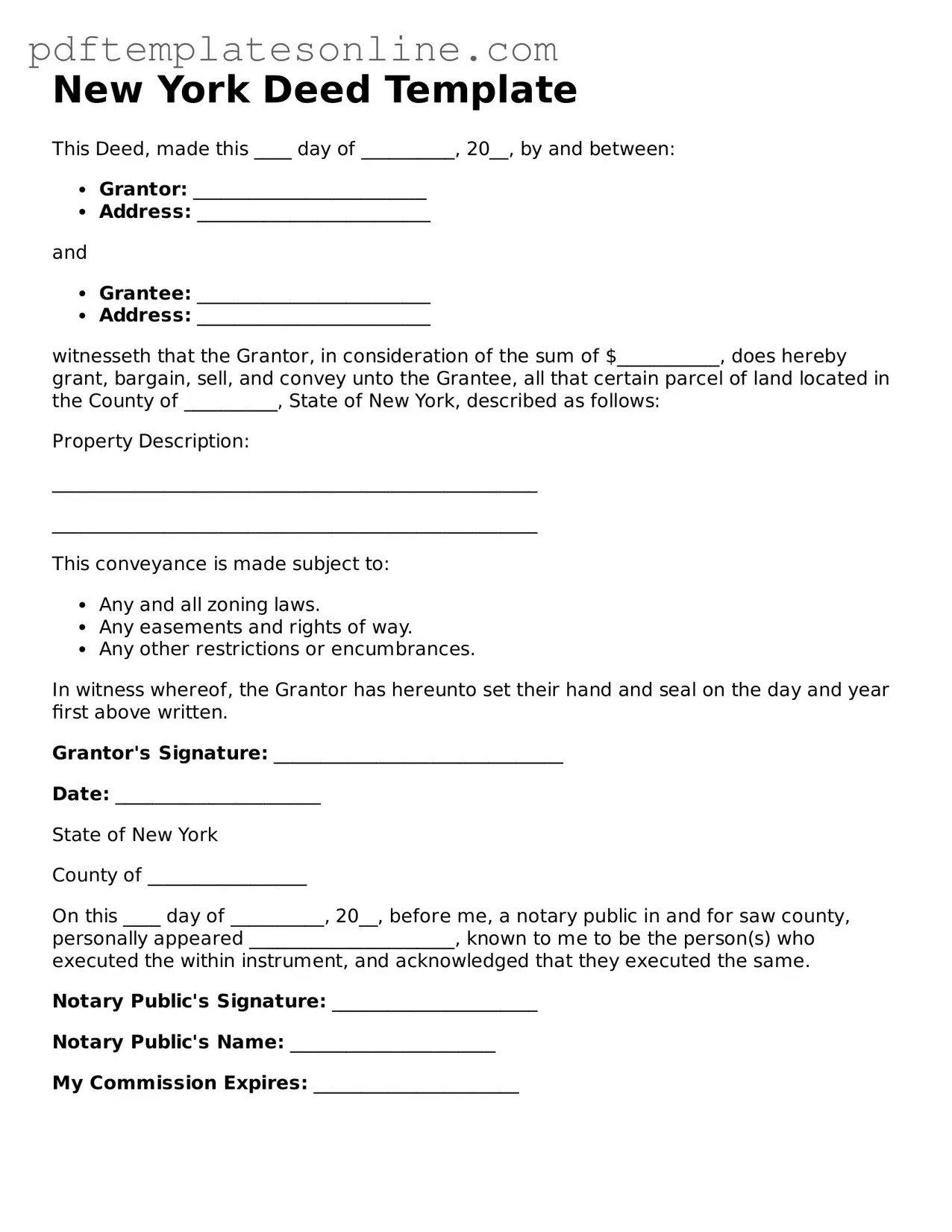Filling out a New York Deed form can be straightforward, but mistakes can lead to complications. One common error is failing to include the correct names of the grantor and grantee. It is essential that the names match those on identification documents to avoid confusion or disputes later.
Another frequent mistake is not providing a complete legal description of the property. The description should be precise and match the information recorded in the county clerk's office. Incomplete or vague descriptions can result in legal challenges regarding property boundaries.
People often overlook the need for notarization. A deed must be signed in the presence of a notary public to be valid. Without this step, the deed may not be recognized by the county or other entities involved in the property transfer.
Some individuals forget to check for any outstanding liens or encumbrances on the property. Ignoring these can lead to unexpected financial responsibilities for the new owner. It is advisable to conduct a title search prior to completing the deed.
Another mistake involves not recording the deed promptly. After signing and notarizing, it is important to file the deed with the appropriate county office. Delays in recording can complicate future transactions or ownership disputes.
People sometimes fail to include the necessary transfer tax information. New York requires that certain taxes be paid upon the transfer of property. Not providing this information can lead to penalties or delays in processing the deed.
Misunderstanding the type of deed being used is also a common issue. Different types of deeds, such as warranty deeds or quitclaim deeds, have different implications for ownership rights. Choosing the wrong type can impact the legal protections afforded to the new owner.
Inaccurate dates can cause problems as well. The date of the transaction should be clear and accurate. Incorrect dates may lead to confusion regarding the timeline of ownership and can complicate legal matters.
People may also neglect to include any required additional documentation. Depending on the nature of the property transfer, other forms or disclosures may be necessary. Failing to include these can delay the process or invalidate the deed.
Lastly, individuals sometimes do not seek legal advice when needed. Consulting with a real estate attorney can help ensure that all aspects of the deed are correctly handled. This step can prevent costly mistakes and provide peace of mind during the property transfer process.
